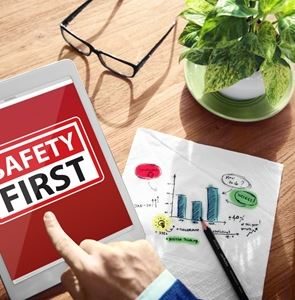Couples Spending Top Dollar For Weddings This Year
May 18, 2016Tips from the National Flood Insurance Program
August 25, 2016
From constructions zones to office spaces, on-the-job injuries happen on a daily basis just about anywhere. In fact, according to the National Safety Council, nearly 13,000 workers are hurt daily, which translates to one injury every seven seconds.
 Tragically, some of these injuries are so severe that workers are killed. In 2014, the latest year that data is available, 4,132 individuals died in accidents that occurred on the job, based on government estimates.
Tragically, some of these injuries are so severe that workers are killed. In 2014, the latest year that data is available, 4,132 individuals died in accidents that occurred on the job, based on government estimates.
For the most part, most accidental injuries aren’t so serious as to be life threatening. In virtually every case, though, two things are all but certain: They bring productivity to a grinding halt – 99 million workdays were lost nationwide in 2014 due to employment-related injuries – and could have been prevented had the proper precautions been taken.
“35% of work-related injuries result from overexertion.”
Of all the injuries that prevent employees from being productive, sprains, strains and tears are the most common. Usually caused by overexertion, 420,870 people suffered one of these injuries in 2014, according to the Bureau of Labor Statistics. Meanwhile, 197,870 were unable to come to work due to soreness or pain, the second-most common injury type that forced individuals to miss work.
No matter what kind of business you operate, it’s important to establish a work-safe culture. This starts with supplying your employees with the knowledge they need to avoid accidents that are waiting to happen. The following are the most frequent job-related injuries that occur every year, followed by a few basic tips on how they can be avoided:
Overexertion
- When lifting or lowering anything heavy or cumbersome, lift with the knees instead of the back.
- Avoid bending or reaching while in the process of lifting.
- When moving extra heavy equipment, take short breaks in between, especially when transporting items far distances.
Contact with objects and equipment
- Instead of perching heavy items aloft, keep them on the floor.
- Wear reflective vests when in dark areas so others can see you.
- Have tools available that provide protection.
Slip and fall accidents
- Never step on the top rung of ladders.
- Brace ladders so that they don’t move when standing on them.
- Place “caution” or “slippery when wet” signs out when surfaces are hazardous.
Check out NSC’s infographic for some other helpful hints on how to keep your employees safe while they’re at work. Also, if you’re in the construction business, the Occupational Safety and Health Administration has a number of online resources detailing some of the ways you can make every work zone a safe zone. The construction sector has the fifth-highest rate of on-the-job injuries per year.
Thanks to one of our carriers, Selective®, for this great article!
May 25, 2016 | Source

 Get a Quote
Get a Quote
